Indoor/Outdoor Environmental Parameters and Window-Opening Behavior: A Structural Equation Modeling Analysis
Abstract
:1. Introduction
2. Materials and Methods
2.1. Case Study Building
2.2. Indoor Environmental Data Collection
- 12 July 2014–21 August 2014 → Summer
- 2 October 2014–12 December 2014 → Fall
- 6 January 2015–20 March 2014 → Winter
2.3. Outdoor Environmental Data Collection
2.4. Occupant Monitoring
2.5. Structural Equation Modeling
3. Results
3.1. Descriptive Statistics
3.1.1. Thermal Comfort Condition
3.1.2. Carbon Dioxide Concentration
3.2. Window Opening Events
- the room is too hot;
- to add background noise;
- to improve air circulation;
- to enjoy an outdoor event.
- the room is too hot;
- to add background noise;
- to improve air circulation;
- the room has a bad smell.
3.3. Structural Equation Model
4. Discussion
5. Conclusions
Author Contributions
Funding
Acknowledgments
Conflicts of Interest
Abbreviations
| SE | Standard error |
| StDev | Standard deviation |
| D | Kolmogorov-Smirnov statistic |
| CI | Confidence interval |
| Out_RH | Outdoor relative humidity (%) |
| Out_Temp | Outdoor air temperature (°F) |
| Out_WindDir | Outdoor wind direction (°) |
| Out_WSpeed | Outdoor wind speed (knot) |
| Out_Gust | Outdoor wind gust (knot) |
| Out_Rad | Solar radiation (watt/m) |
| Ave_Av | Indoor mean air velocity (m/s) |
| In_CO2 | Indoor carbon dioxide concentration (ppm) |
| WBGT | Indoor wet-bulb globe temperature (°F) |
| Sound_dB | Indoor sound pressure level (dBA) |
| WOB | Fraction of window opened (number of window opened divided by the total of six windows) |
References
- Brager, G.S.; de Dear, R.J. Thermal adaptation in the built environment: A literature review. Energy Build. 1998, 27, 83–96. [Google Scholar] [CrossRef]
- Baker, N.; Standeven, M. Thermal comfort for free-running buildings. Energy Build. 1996, 23, 175–182. [Google Scholar] [CrossRef]
- Milne, G.R. The energy implications of a climate-based indoor air temperature standard. In Standards for Thermal Comfort: Indoor Air Temperature Standards for the 21st Century; Nicol, F., Humphreys, M., Sykes, O., Roaf, S., Eds.; Book Section 19; Chapman and Hall: London, UK, 1995; pp. 182–189. [Google Scholar]
- Wang, L.; Greenberg, S. Window operation and impacts on building energy consumption. Energy Build. 2015, 92, 313–321. [Google Scholar] [CrossRef]
- Rijal, H.B.; Tuohy, P.; Humphreys, M.A.; Nicol, J.F.; Samuel, A.; Clarke, J. Using results from field surveys to predict the effect of open windows on thermal comfort and energy use in buildings. Energy Build. 2007, 39, 823–836. [Google Scholar] [CrossRef]
- Fabi, V.; Andersen, R.V.; Corgnati, S.; Olesen, B.W. Occupants’ window opening behaviour: A literature review of factors influencing occupant behaviour and models. Build. Environ. 2012, 58, 188–198. [Google Scholar] [CrossRef]
- Choi, J.H.; Loftness, V.; Aziz, A. Post-occupancy evaluation of 20 office buildings as basis for future IEQ standards and guidelines. Energy Build. 2012, 46, 167–175. [Google Scholar] [CrossRef]
- van Raaij, W.F.; Verhallen, T.M.M. Patterns of residential energy behavior. J. Econ. Psychol. 1983, 4, 85–106. [Google Scholar] [CrossRef]
- Karlsson, F.; Rohdin, P.; Persson, M.L. Measured and predicted energy demand of a low energy building: important aspects when using Building Energy Simulation. Build. Serv. Eng. Res. Technol. 2007, 28, 223–235. [Google Scholar] [CrossRef]
- Borgeson, S.; Brager, G. Occupant Control of Windows: Accounting for Human Behavior in Building Simulation; Internal Report; Center for the Built Environment: Berkeley, CA, USA, 2008; Available online: https://escholarship.org/uc/item/5gx2n1zz (accessed on 16 April 2019).
- Fritsch, R.; Kohler, A.; Nygard-Ferguson, M.; Scartezzini, J.L. A stochastic model of user behaviour regarding ventilation. Build. Environ. 1990, 25, 173–181. [Google Scholar] [CrossRef]
- Haldi, F.; Robinson, D. Interactions with window openings by office occupants. Build. Environ. 2009, 44, 2378–2395. [Google Scholar] [CrossRef]
- Herkel, S.; Knapp, U.; Pfafferott, J. Towards a model of user behaviour regarding the manual control of windows in office buildings. Build. Environ. 2008, 43, 588–600. [Google Scholar] [CrossRef]
- Nicol, J.F.; Humphreys, M.A. Adaptive thermal comfort and sustainable thermal standards for buildings. Energy Build. 2002, 34, 563–572. [Google Scholar] [CrossRef]
- Yun, G.Y.; Steemers, K. Time-dependent occupant behaviour models of window control in summer. Build. Environ. 2008, 43, 1471–1482. [Google Scholar] [CrossRef]
- Zhang, Y.; Barrett, P. Factors influencing the occupants’ window opening behaviour in a naturally ventilated office building. Build. Environ. 2012, 50, 125–134. [Google Scholar] [CrossRef]
- D’Oca, S.; Hong, T. A data-mining approach to discover patterns of window opening and closing behavior in offices. Build. Environ. 2014, 82, 726–739. [Google Scholar] [CrossRef]
- Li, N.; Li, J.; Fan, R.; Jia, H. Probability of occupant operation of windows during transition seasons in office buildings. Renew. Energy 2015, 73, 84–91. [Google Scholar] [CrossRef]
- Pan, S.; Xiong, Y.; Han, Y.; Zhang, X.; Xia, L.; Wei, S.; Wu, J.; Han, M. A study on influential factors of occupant window-opening behavior in an office building in China. Build. Environ. 2018, 133, 41–50. [Google Scholar] [CrossRef]
- Rijal, H.B.; Samuel, A.; Tuohy, P.; Humphreys, M.A.; Raja, I.A.; Clarke, J.; Nicol, J.F. Development of Adaptive Algorithms for the Operation of Windows, Fans, and Doors to Predict Thermal Comfort and Energy Use in Pakistani Buildings. ASHRAE Trans. 2008, 114, 555–573. [Google Scholar]
- Warren, P.R.; Parkins, L.M. Window-opening behaviour in office buildings. Build. Serv. Eng. Res. Technol. 1984, 5, 89–101. [Google Scholar] [CrossRef]
- Rijal, H.B.; Humphreys, M.A.; Nicol, J.F. Development of a window opening algorithm based on adaptive thermal comfort to predict occupant behavior in Japanese dwellings. Jpn. Archit. Rev. 2018, 1, 310–321. [Google Scholar] [CrossRef]
- Haldi, F.; Robinson, D. On the behaviour and adaptation of office occupants. Build. Environ. 2008, 43, 2163–2177. [Google Scholar] [CrossRef]
- Stazi, F.; Naspi, F.; D’Orazio, M. A literature review on driving factors and contextual events influencing occupants’ behaviours in buildings. Build. Environ. 2017, 118, 40–66. [Google Scholar] [CrossRef]
- Landsman, J.; Brager, G.; Doctor-Pingel, M. Performance, prediction, optimization, and user behavior of night ventilation. Energy Build. 2018, 166, 60–72. [Google Scholar] [CrossRef]
- Andersen, R.; Fabi, V.; Toftum, J.; Corgnati, S.P.; Olesen, B.W. Window opening behaviour modelled from measurements in Danish dwellings. Build. Environ. 2013, 69, 101–113. [Google Scholar] [CrossRef]
- Belafi, Z.D.; Naspi, F.; Arnesano, M.; Reith, A.; Revel, G.M. Investigation on window opening and closing behavior in schools through measurements and surveys: A case study in Budapest. Build. Environ. 2018, 143, 523–531. [Google Scholar] [CrossRef]
- Yao, M.; Zhao, B. Window opening behavior of occupants in residential buildings in Beijing. Build. Environ. 2017, 124, 441–449. [Google Scholar] [CrossRef]
- Shi, Z.; Qian, H.; Zheng, X.; Lv, Z.; Li, Y.; Liu, L.; Nielsen, P.V. Seasonal variation of window opening behaviors in two naturally ventilated hospital wards. Build. Environ. 2018, 130, 85–93. [Google Scholar] [CrossRef]
- Pan, S.; Han, Y.; Wei, S.; Wei, Y.; Xia, L.; Xie, L.; Kong, X.; Yu, W. A model based on Gauss Distribution for predicting window behavior in building. Build. Environ. 2019, 149, 210–219. [Google Scholar] [CrossRef]
- Markovic, R.; Grintal, E.; Wölki, D.; Frisch, J.; van Treeck, C. Window opening model using deep learning methods. Build. Environ. 2018, 145, 319–329. [Google Scholar] [CrossRef]
- ANSI/ASHRAE. Standard 55—Thermal Environmental Conditions for Human Occupancy; ASHRAE: Atlanta, GA, USA, 2013. [Google Scholar]
- Chin, W.W. Issues and Opinion on Structural Equation Modeling. MIS Q. 1998, 22, vii–xvi. Available online: https://www.jstor.org/stable/249674 (accessed on 16 April 2019).
- Kline, R.B. Principles and Practice of Structural Equation Modeling, 4th ed.; Methodology in the Social Sciences; The Guilford Press: New York, NY, USA, 2016. [Google Scholar]
- Vinodh, S.; Joy, D. Structural Equation Modelling of lean manufacturing practices. Int. J. Prod. Res. 2012, 50, 1598–1607. [Google Scholar] [CrossRef]
- Rucker, D.D.; Preacher, K.J.; Tormala, Z.L.; Petty, R.E. Mediation Analysis in Social Psychology: Current Practices and New Recommendations. Soc. Personal. Psychol. Compass 2011, 5, 359–371. [Google Scholar] [CrossRef]
- Fox, J.; Nie, Z.; Byrnes, J. sem: Structural Equation Models. 2017. Available online: https://CRAN.R-project.org/package=sem (accessed on 16 April 2019).
- R Core Team. R: A Language and Environment for Statistical Computing; R Foundation for Statistical Computing: Vienna, Austria, 2018. Available online: https://www.R-project.org/ (accessed on 16 April 2019).
- Fox, J. TEACHER’S CORNER: Structural Equation Modeling With the sem Package in R. Struct. Equ. Model. Multidiscip. J. 2006, 13, 465–486. [Google Scholar] [CrossRef]
- ASHRAE/USGBC/CIBSE. Performance Measurement Protocols for Commercial Buildings; American Society of Heating, Refrigerating and Air-Conditioning Engineers, Inc.: Atlanta, GA, USA, 2010. [Google Scholar]
- Kazkaz, M.; Pavelek, M. Operative Temperature and Globe Temperature. Eng. Mech. 2013, 20, 319–325. [Google Scholar]
- Department of Atmospheric Sciences. Rooftop Observations—ATG Building UW; University of Washington: Seattle, WA, USA, 2015; Available online: https://atmos.washington.edu/cgi-bin/list_uw.cgi (accessed on 16 April 2019).
- Automated Controls. Asbuilt Drawings Section 230900, University of Washington Husky Union Building; Project Number 08778-20; Automated Controls: Kirkland, WA, USA, 2013. [Google Scholar]
- Satish, U.; Mendell, M.J.; Shekhar, K.; Hotchi, T.; Sullivan, D.; Streufert, S.; Fisk, W.J. Is CO2 an Indoor Pollutant? Direct Effects of Low-to-Moderate CO2 Concentrations on Human Decision-Making Performance. Environ. Health Perspect. 2012, 120, 1671–1677. [Google Scholar] [CrossRef] [PubMed]
- ASTM International. Standard Guide for Using Indoor Carbon Dioxide Concentrations to Evaluate Indoor Air Quality and Ventilation; ASTM D6245-18; ASTM International: West Conshohocken, PA, USA, 2018. [Google Scholar]
- Hooper, D.; Coughlan, J.; Mullen, M. Structural Equation Modelling: Guidelines for Determining Model Fit. J. Bus. Res. Methods 2008, 6, 53–60. [Google Scholar] [CrossRef]
- Hu, L.T.; Bentler, P.M. Cutoff criteria for fit indexes in covariance structure analysis: Conventional criteria versus new alternatives. Struct. Equ. Model. Multidiscip. J. 1999, 6, 1–55. [Google Scholar] [CrossRef]
- Belaïd, F. Untangling the complexity of the direct and indirect determinants of the residential energy consumption in France: Quantitative analysis using a structural equation modeling approach. Energy Policy 2017, 110, 246–256. [Google Scholar] [CrossRef]
- Estiri, H. A structural equation model of energy consumption in the United States: Untangling the complexity of per-capita residential energy use. Energy Res. Soc. Sci. 2015, 6, 109–120. [Google Scholar] [CrossRef]
- Kelly, S. Do homes that are more energy efficient consume less energy? A structural equation model of the English residential sector. Energy 2011, 36, 5610–5620. [Google Scholar] [CrossRef]
- Aries, M.B.C.; Veitch, J.A.; Newsham, G.R. Windows, view, and office characteristics predict physical and psychological discomfort. J. Environ. Psychol. 2010, 30, 533–541. [Google Scholar] [CrossRef]
- Lee, P.J.; Lee, B.K.; Jeon, J.Y.; Zhang, M.; Kang, J. Impact of noise on self-rated job satisfaction and health in open-plan offices: A structural equation modelling approach. Ergonomics 2015, 59, 222–234. [Google Scholar] [CrossRef] [PubMed]
- Veitch, J.A.; Charles, K.E.; Farley, K.M.J.; Newsham, G.R. A model of satisfaction with open-plan office conditions: COPE field findings. J. Environ. Psychol. 2007, 27, 177–189. [Google Scholar] [CrossRef]
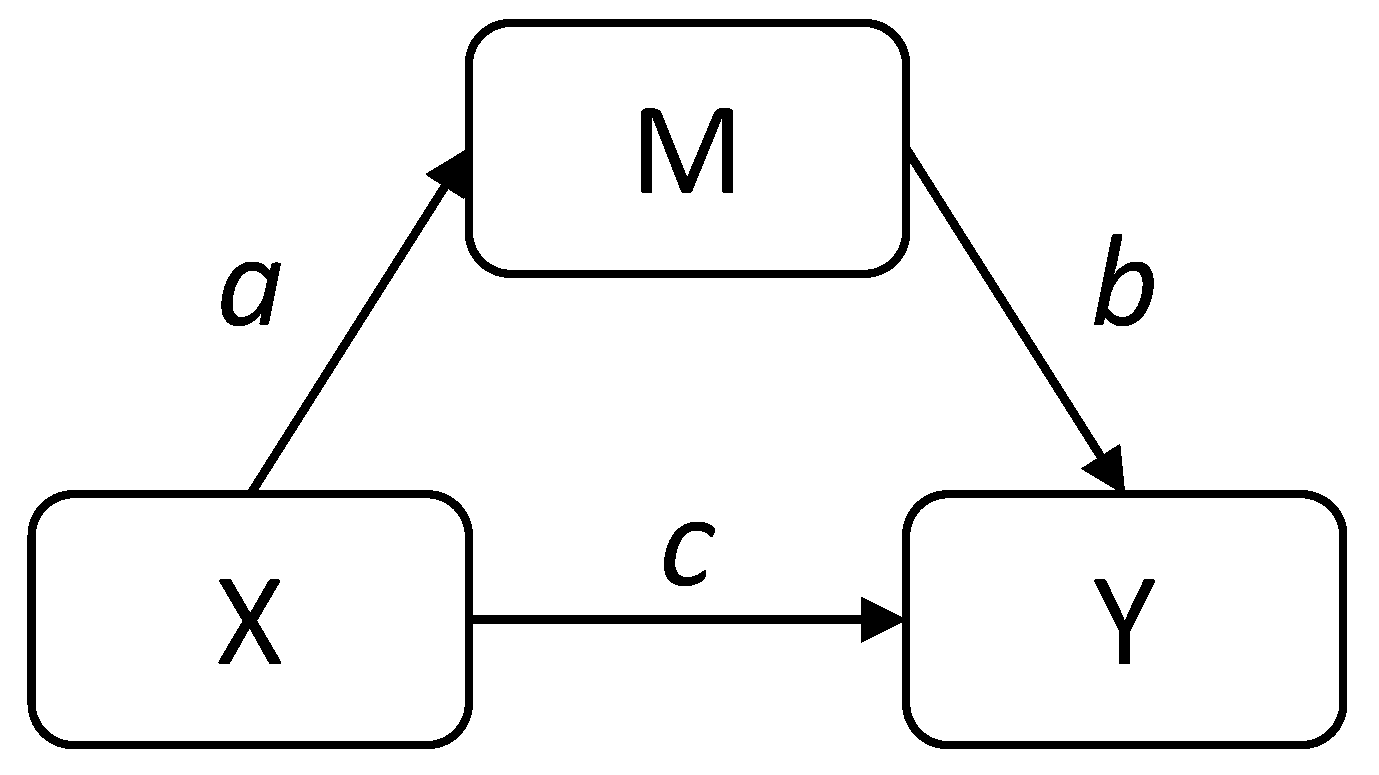
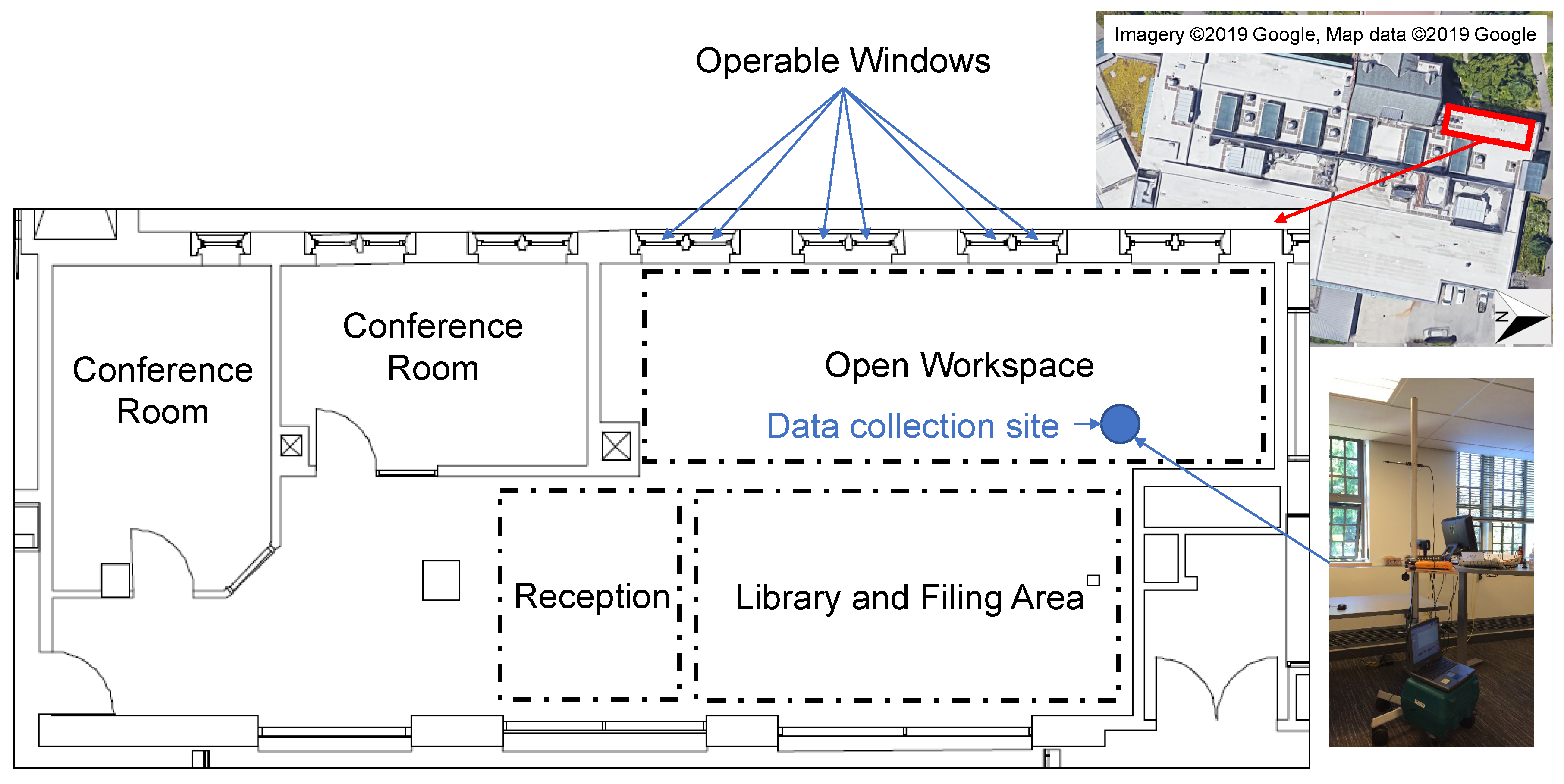
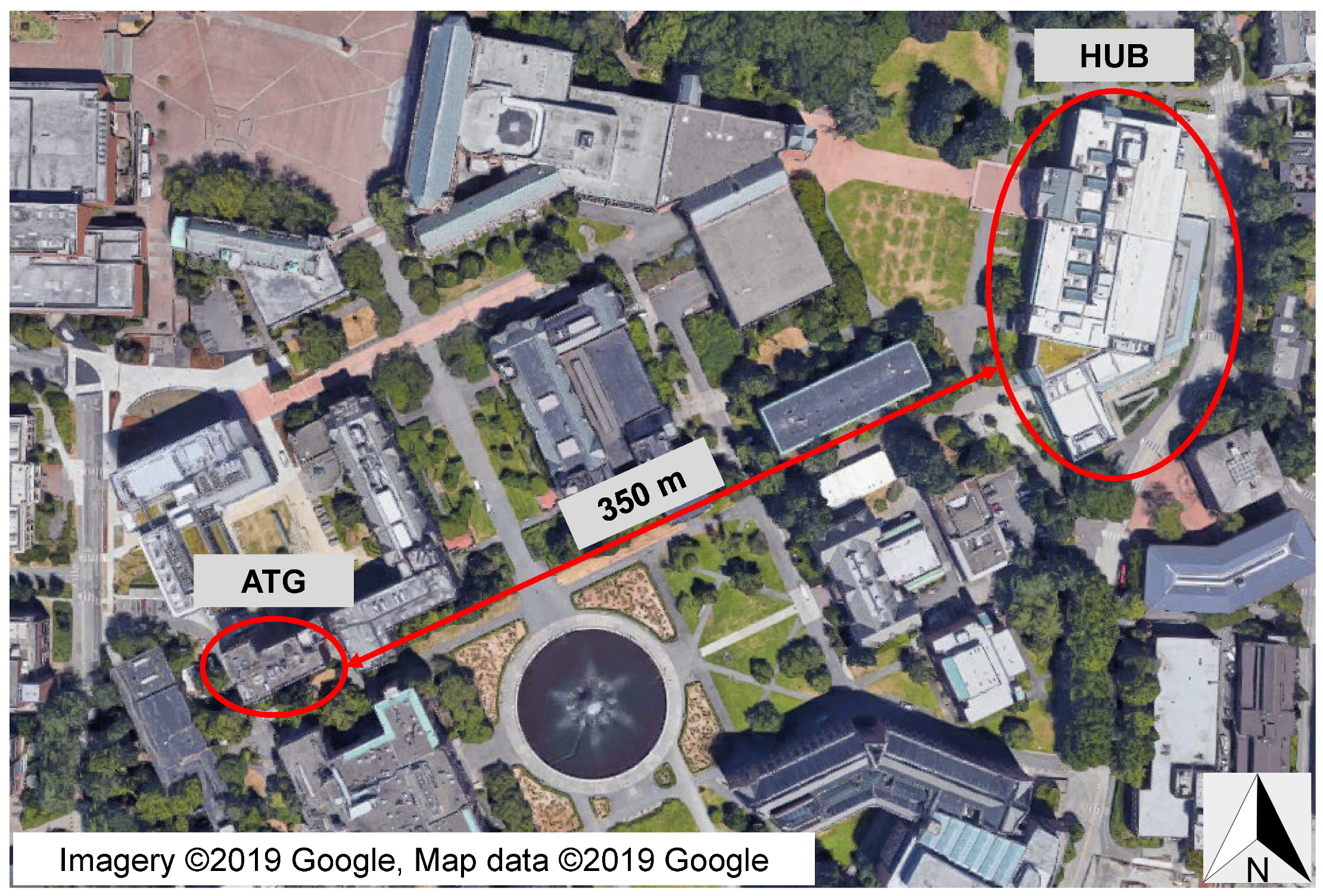

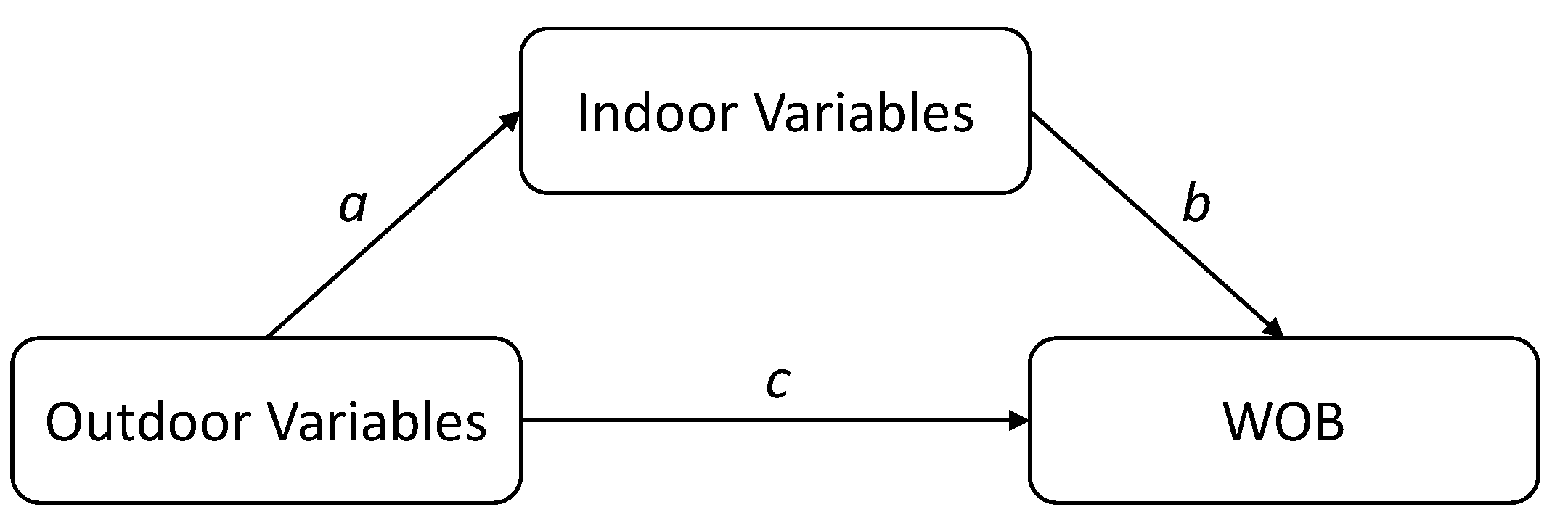
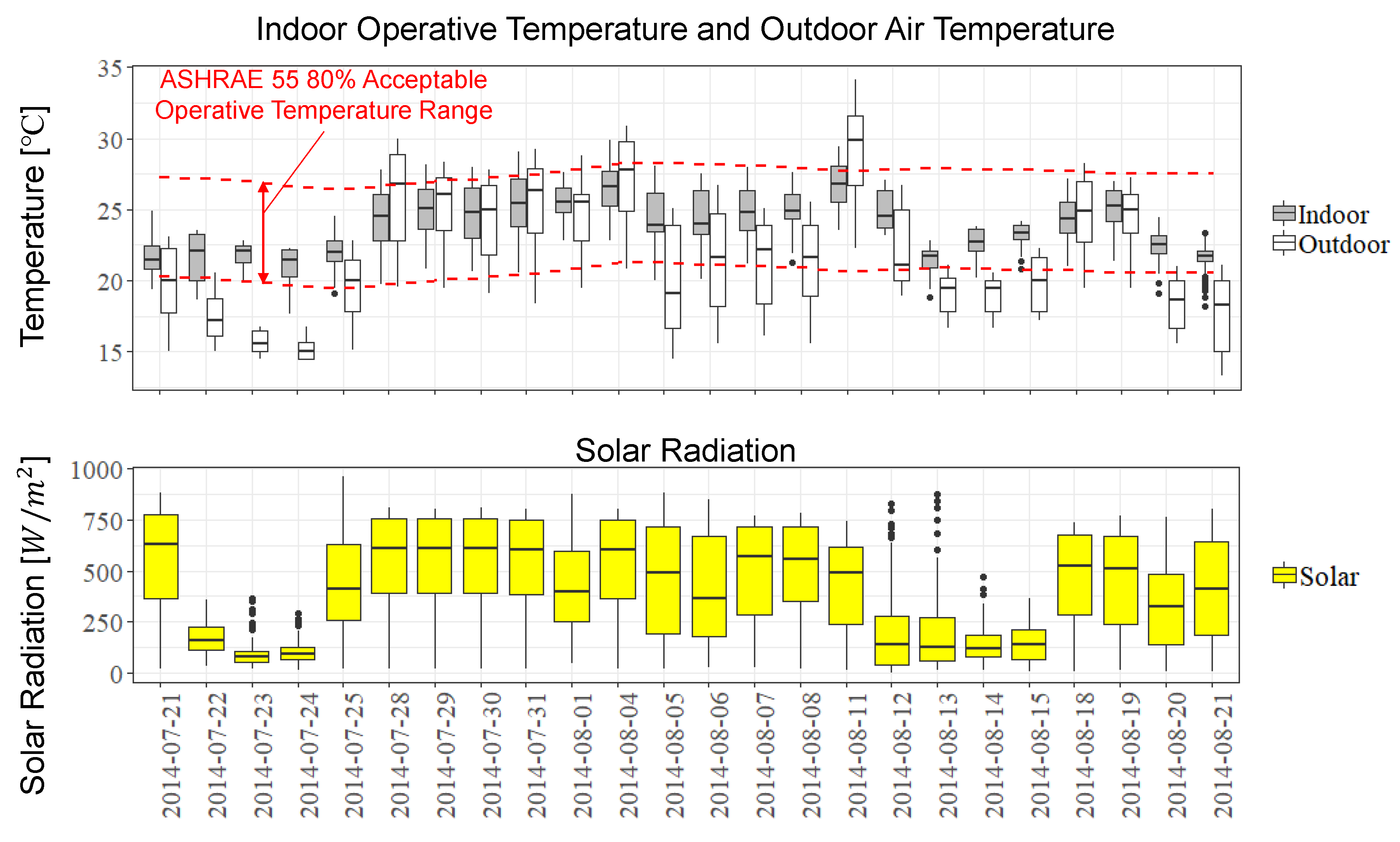
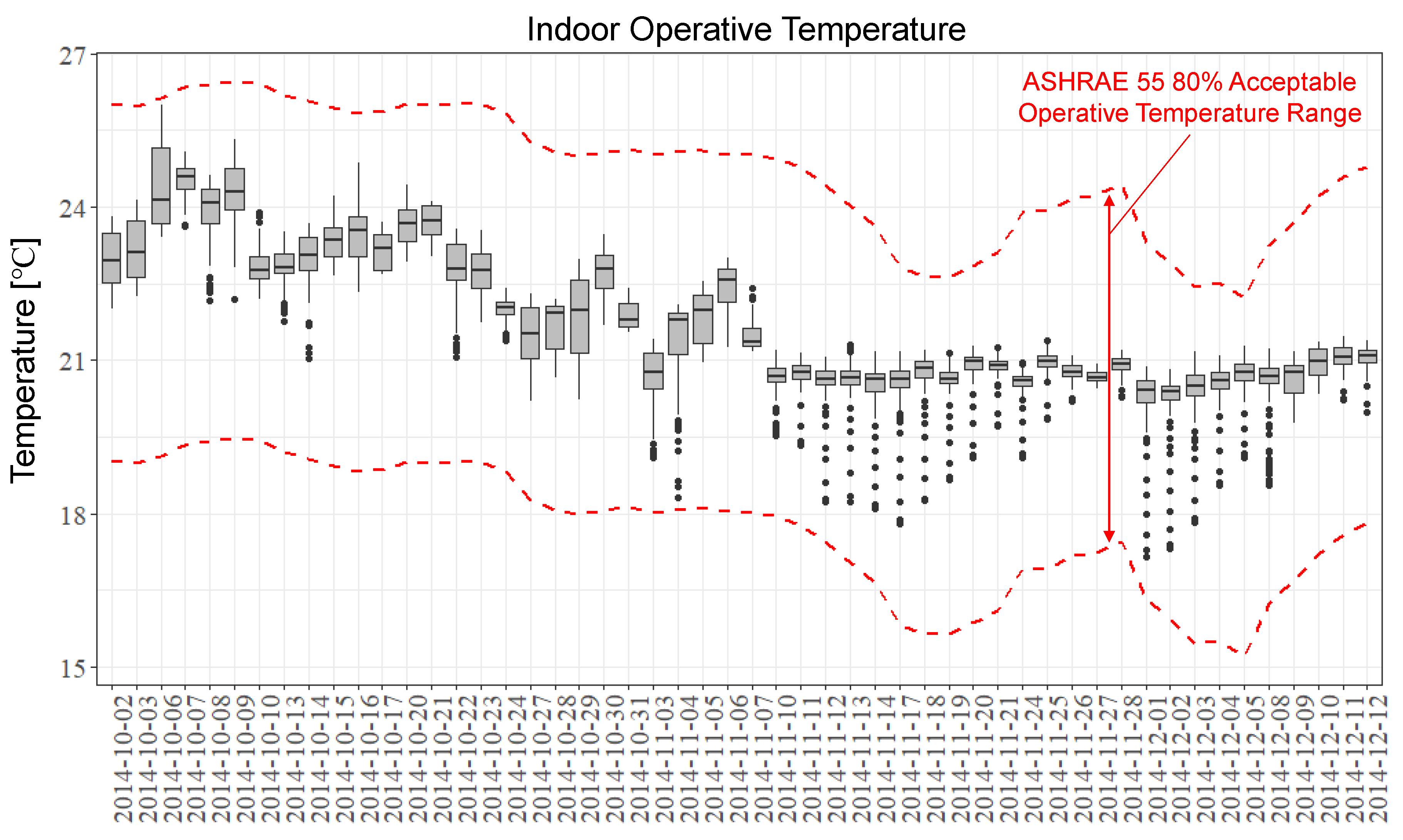
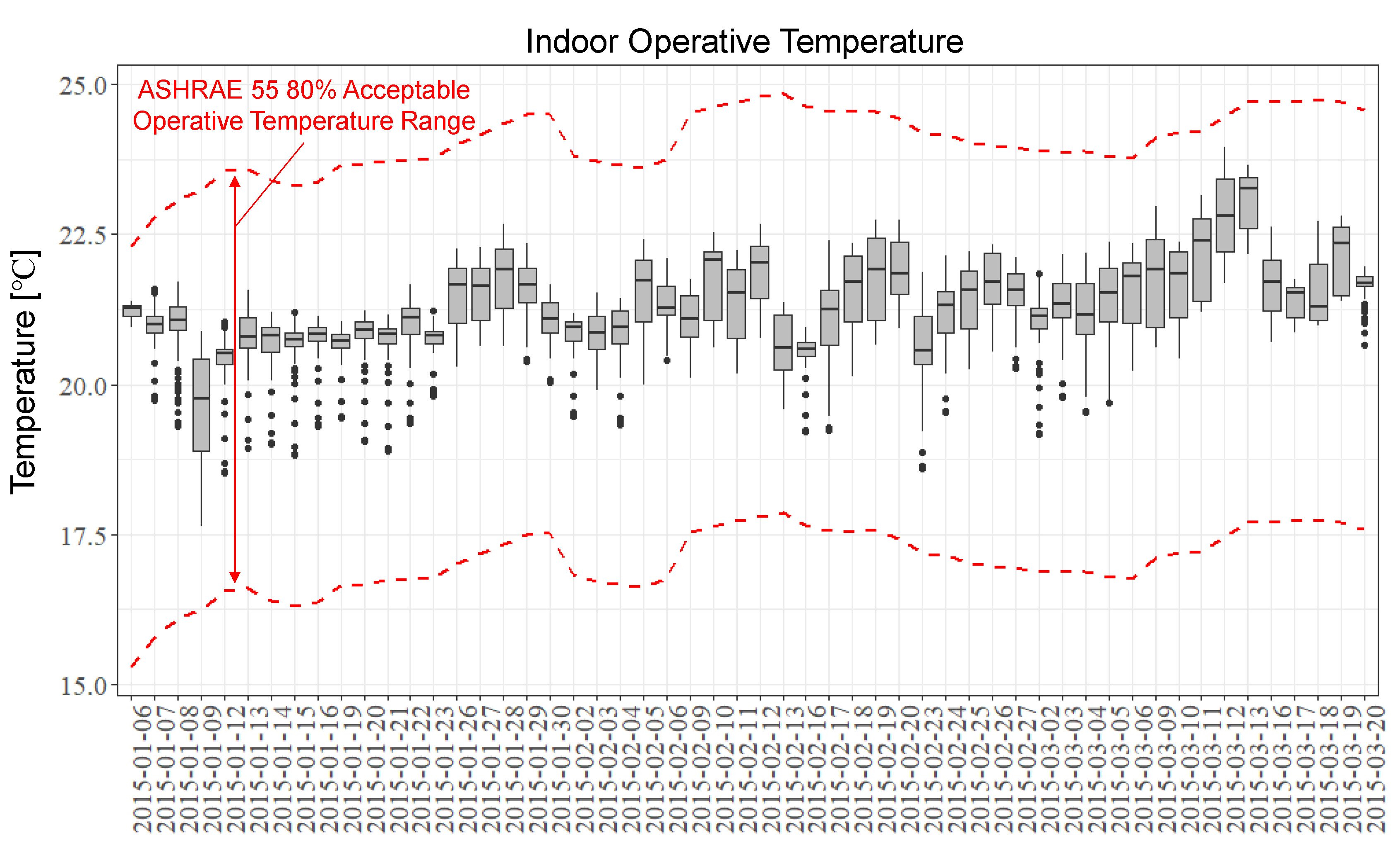
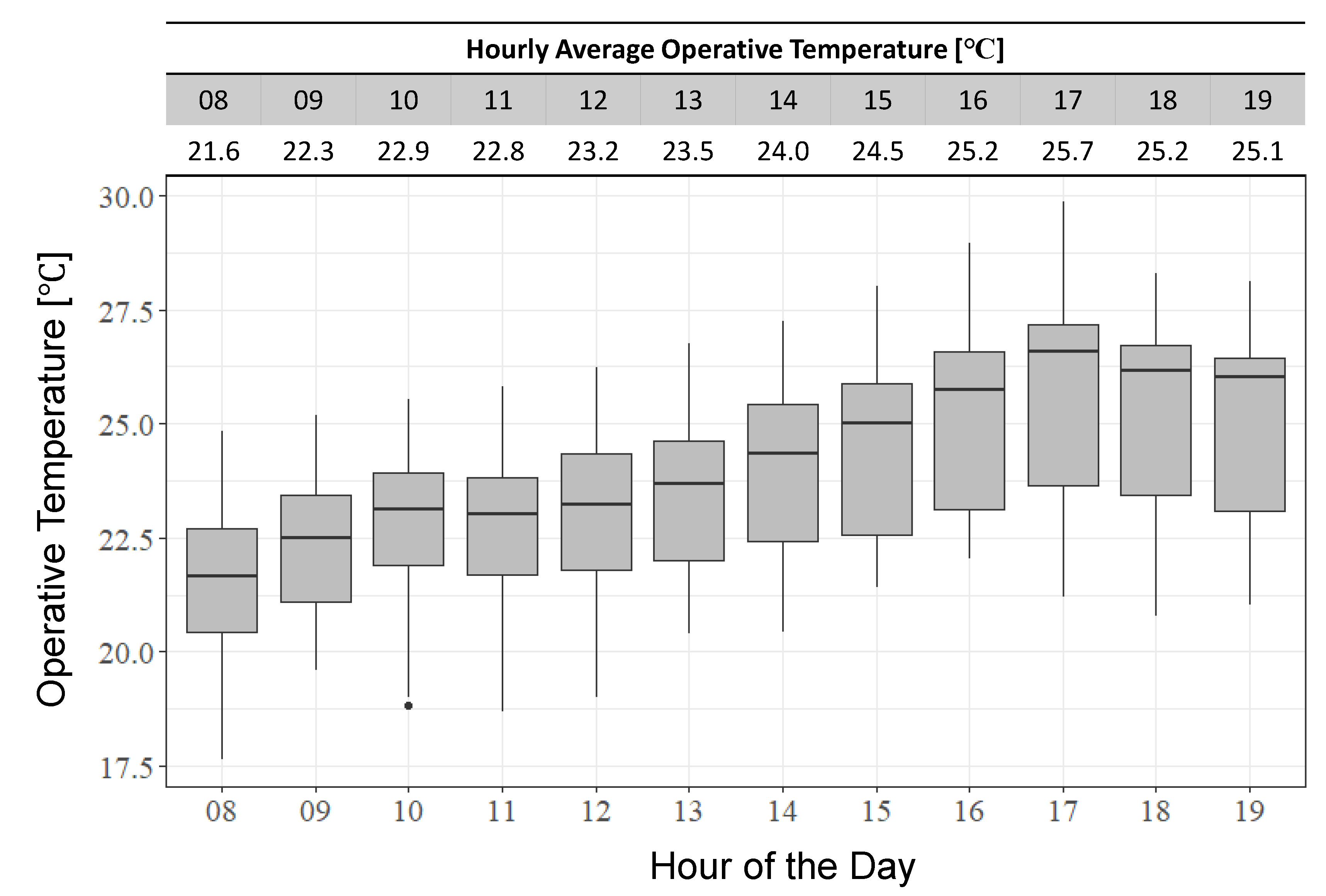
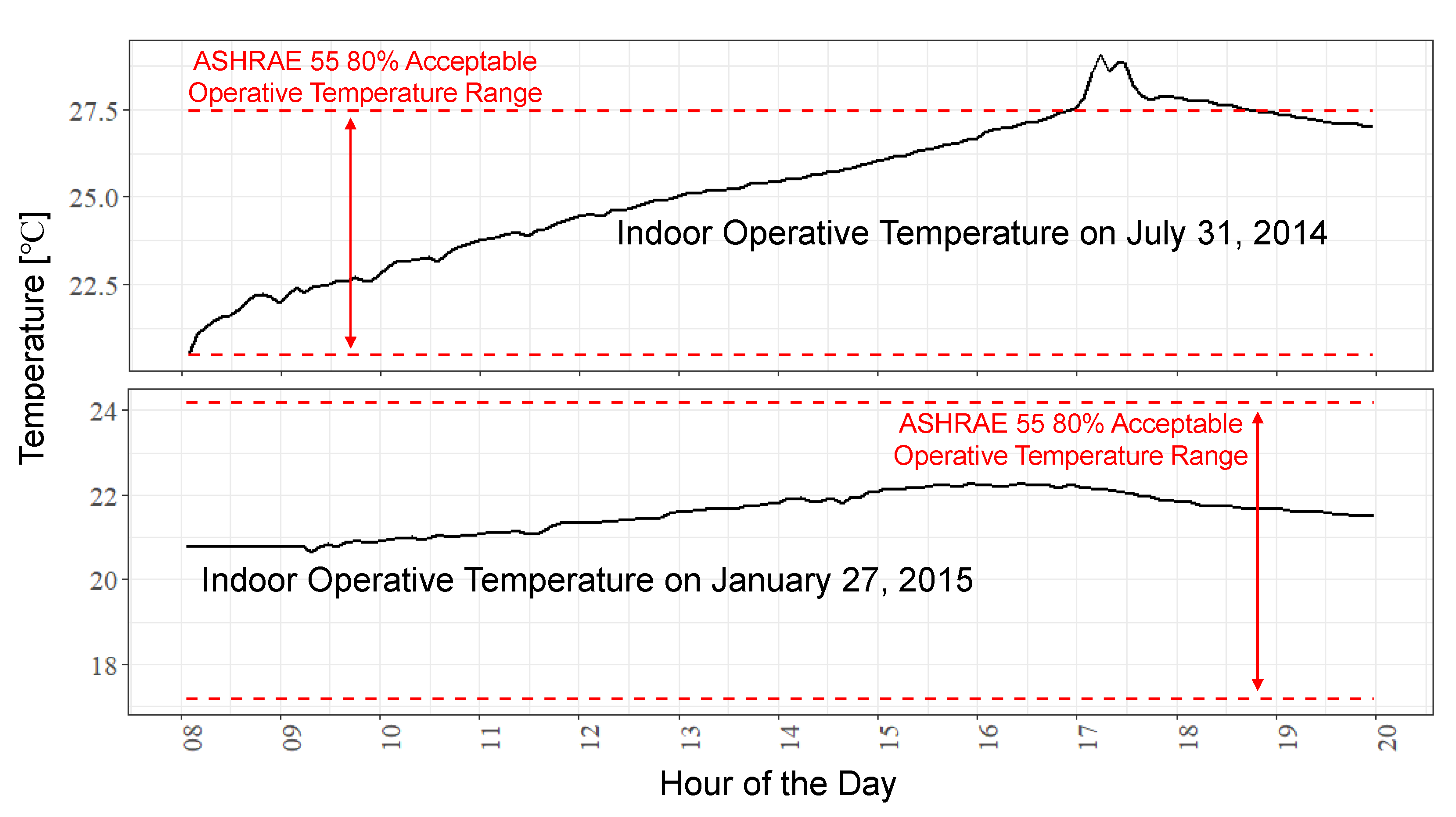
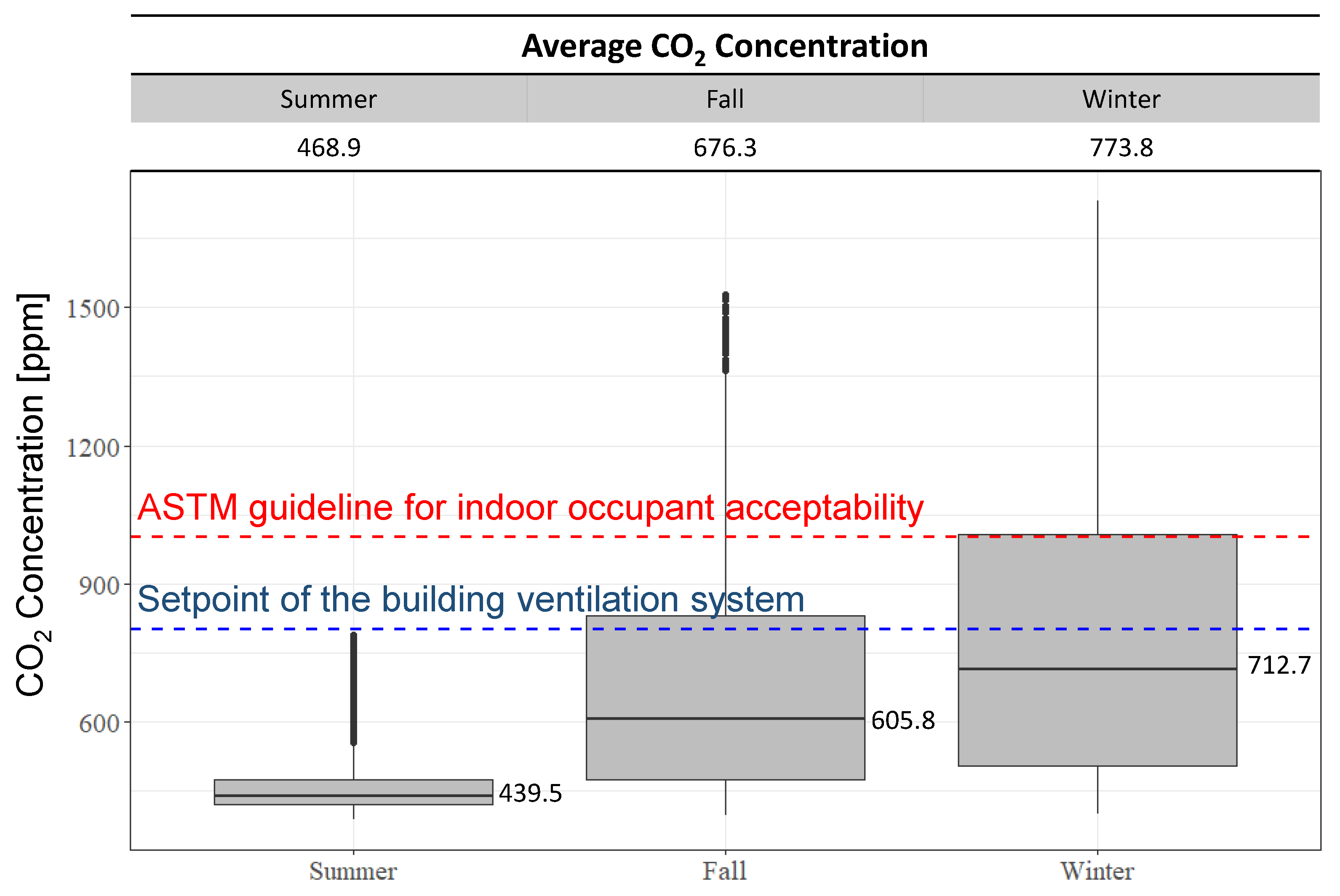
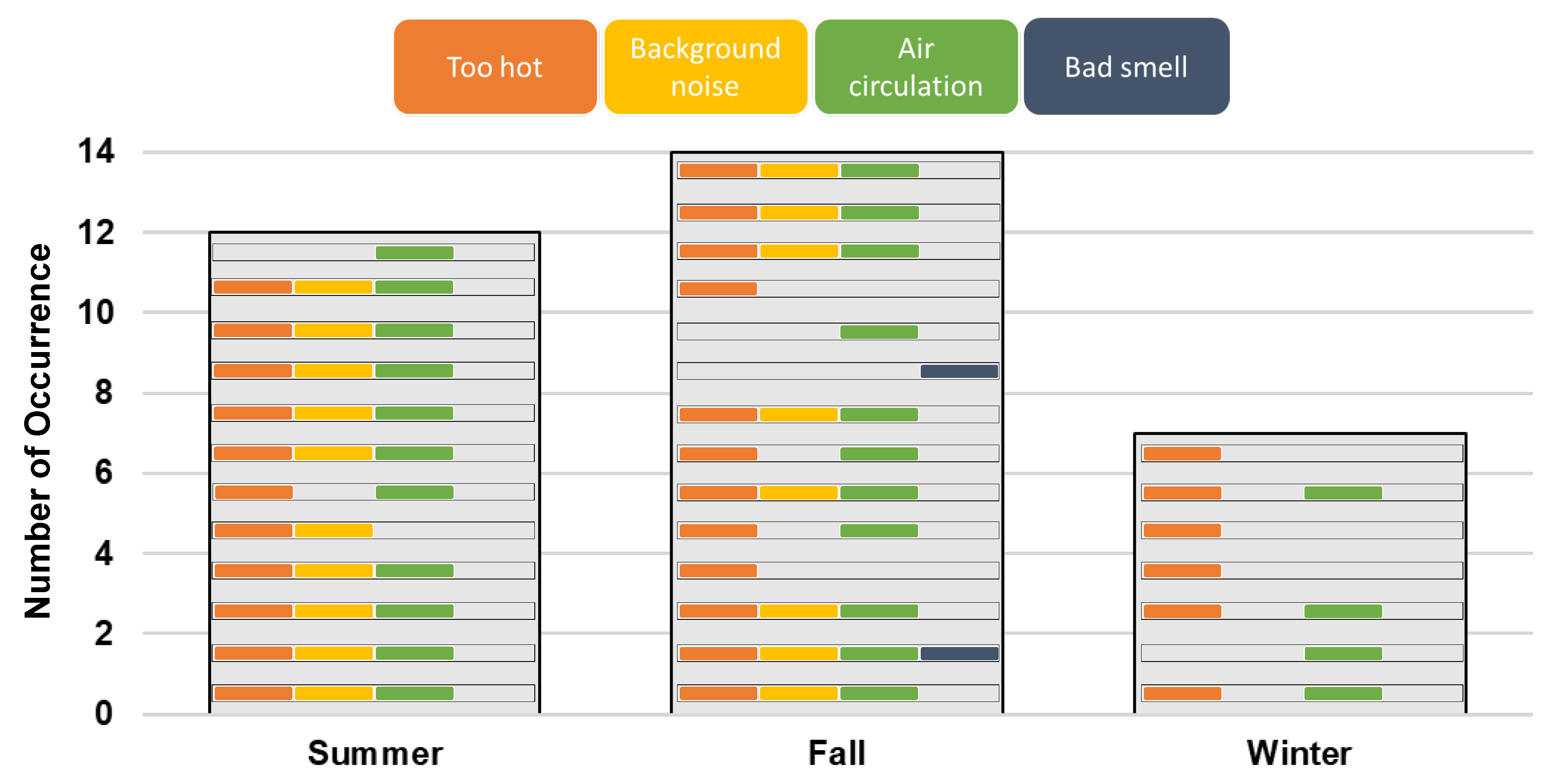
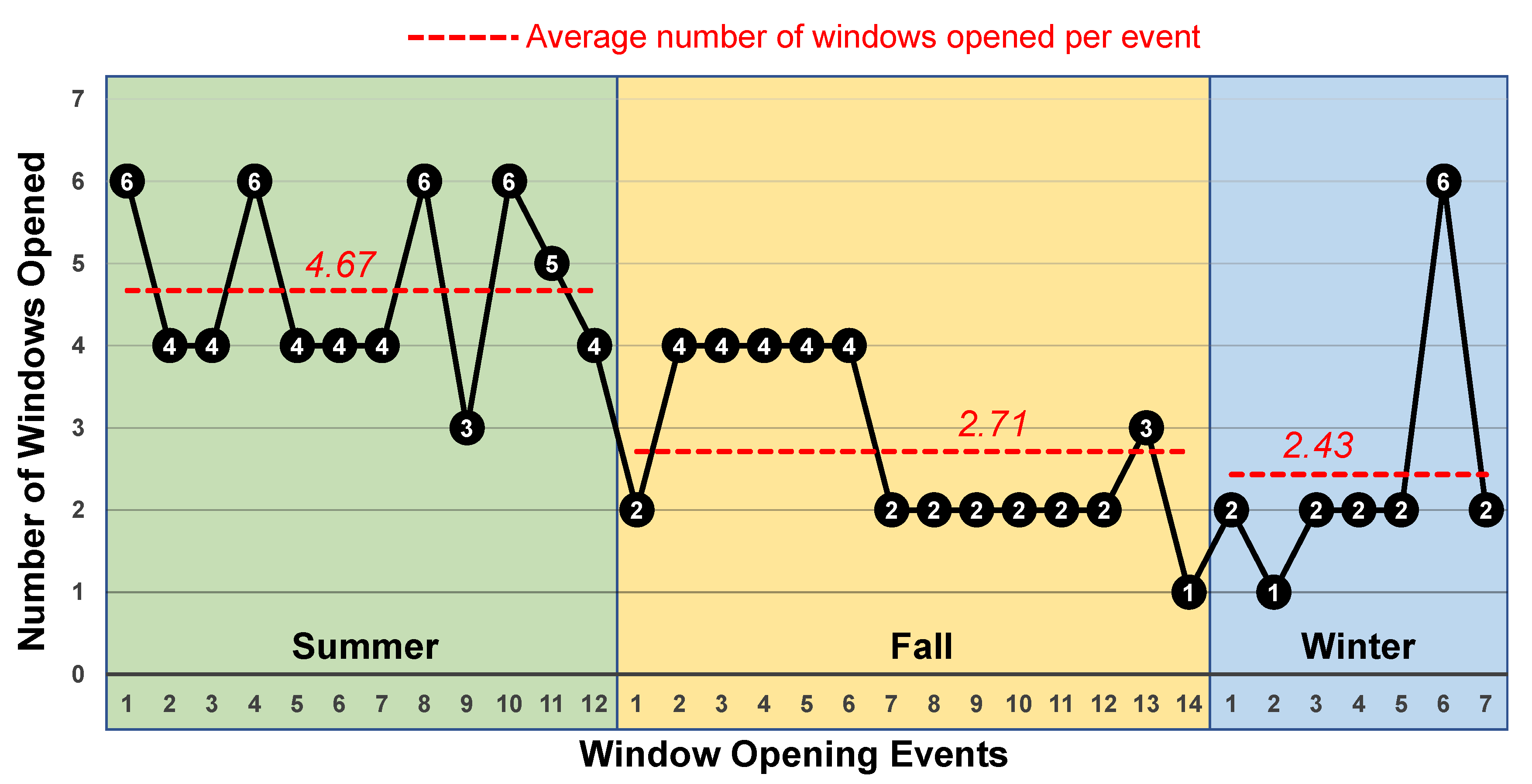
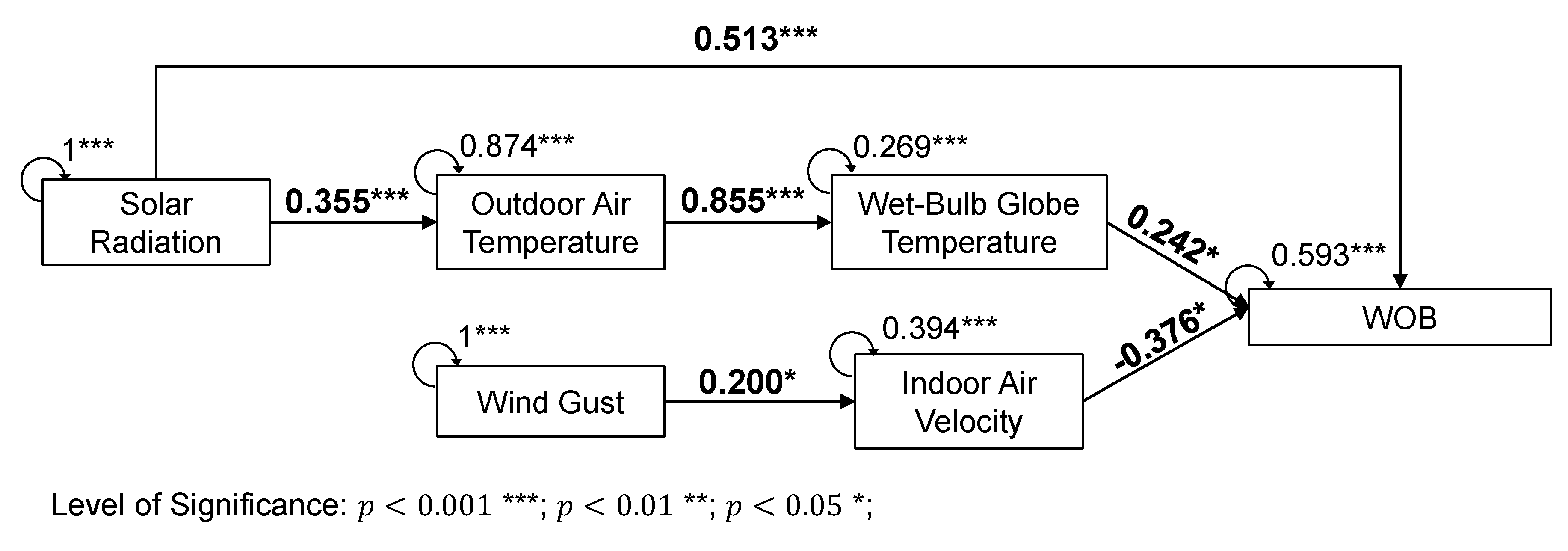
| Parameter | Model | Accuracy | Range |
|---|---|---|---|
| Air Temperature | REED SD-4214 Thermo-anemometer | °C | 0∼50 °C |
| Air Velocity | REED SD-4214 Thermo-anemometer | m/s | 0.2∼25 m/s |
| Globe Temperature | Extech HT30 | °C ( F) | 0∼80 °C |
| WBGT | Extech HT30 | °C ( F) | 0∼50 °C |
| Relative Humidity | Fluke 975 Airmeter | RH | 10∼90% RH |
| CO | Fluke 975 Airmeter | ppm | 0∼5000 ppm |
| Sound | REED SD-4023 Sound Level Meter | Varies by Frequency | 30∼130 dB |
| Season | Dependent Variable | Predictor | Intercept | Coefficient | |
|---|---|---|---|---|---|
| Summer | Globe Temperature | Air Temperature | 0.857 | 0.932 | 0.975 |
| Fall | Globe Temperature | Air Temperature | −3.241 | 1.092 | 0.966 |
| Winter | Globe Temperature | Air Temperature | −3.249 | 1.096 | 0.928 |
| Parameter | Mean | SE Mean | StDev | Min | Median | Max | D | 95% CI |
|---|---|---|---|---|---|---|---|---|
| Out_RH | 69.91 | 2.08 | 14.24 | 30.00 | 70.00 | 93.00 | 0.085 | (65.73, 74.10) |
| Out_Temp | 61.26 | 1.16 | 7.95 | 41.00 | 61.00 | 83.00 | 0.104 | (58.92, 63.59) |
| Out_WindDir | 202.98 | 9.43 | 64.64 | 56.00 | 210.00 | 344.00 | 0.084 | (184.00, 221.96) |
| Out_WSpeed | 5.04 | 0.41 | 2.84 | 0.00 | 5.00 | 11.00 | 0.105 | (4.21, 5.88) |
| Out_Gust | 6.23 | 0.47 | 3.24 | 0.00 | 6.00 | 13.00 | 0.121 | (5.28, 7.19) |
| Out_Rad | 211.0 | 30.1 | 206.0 | 0.0 | 160.8 | 801.5 | 0.118 | (150.5, 271.5) |
| Ave_Av | 0.05 | 0.01 | 0.10 | 0.00 | 0.00 | 0.42 | 0.304 | (0.02, 0.08) |
| In_CO2 | 558.5 | 28.1 | 193.0 | 416.0 | 504.5 | 1319.5 | 0.151 | (501.8, 615.1) |
| WBGT | 64.57 | 0.45 | 3.09 | 57.20 | 64.80 | 69.80 | 0.100 | (63.66, 65.48) |
| Sound_dB | 49.11 | 0.92 | 6.30 | 38.27 | 47.74 | 66.68 | 0.088 | (47.26, 50.96) |
| WOB | 0.42 | 0.06 | 0.39 | 0.00 | 0.33 | 1.00 | 0.182 | (0.31, 0.54) |
| Reason | Summer | Fall | Winter |
|---|---|---|---|
| The room is too hot | 11 | 12 | 6 |
| To add background noise | 10 | 8 | 0 |
| To improve air circulation | 11 | 11 | 4 |
| The room has a bad smell | 0 | 2 | 0 |
© 2019 by the authors. Licensee MDPI, Basel, Switzerland. This article is an open access article distributed under the terms and conditions of the Creative Commons Attribution (CC BY) license (http://creativecommons.org/licenses/by/4.0/).
Share and Cite
Kim, A.; Wang, S.; Kim, J.-E.; Reed, D. Indoor/Outdoor Environmental Parameters and Window-Opening Behavior: A Structural Equation Modeling Analysis. Buildings 2019, 9, 94. https://doi.org/10.3390/buildings9040094
Kim A, Wang S, Kim J-E, Reed D. Indoor/Outdoor Environmental Parameters and Window-Opening Behavior: A Structural Equation Modeling Analysis. Buildings. 2019; 9(4):94. https://doi.org/10.3390/buildings9040094
Chicago/Turabian StyleKim, Amy, Shuoqi Wang, Ji-Eun Kim, and Dorothy Reed. 2019. "Indoor/Outdoor Environmental Parameters and Window-Opening Behavior: A Structural Equation Modeling Analysis" Buildings 9, no. 4: 94. https://doi.org/10.3390/buildings9040094
APA StyleKim, A., Wang, S., Kim, J.-E., & Reed, D. (2019). Indoor/Outdoor Environmental Parameters and Window-Opening Behavior: A Structural Equation Modeling Analysis. Buildings, 9(4), 94. https://doi.org/10.3390/buildings9040094






